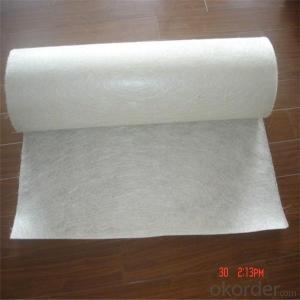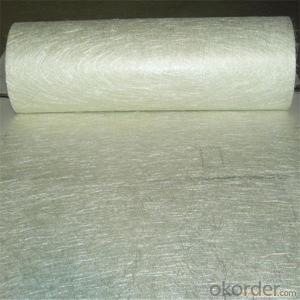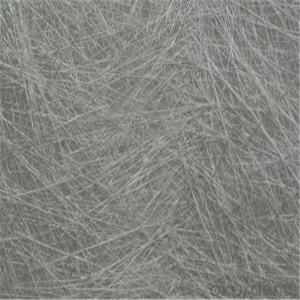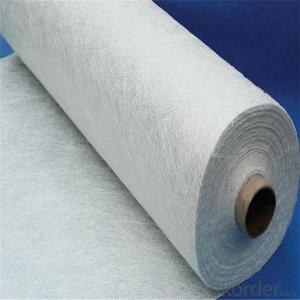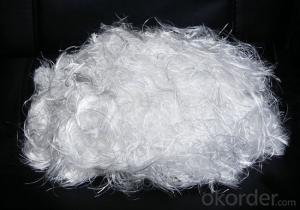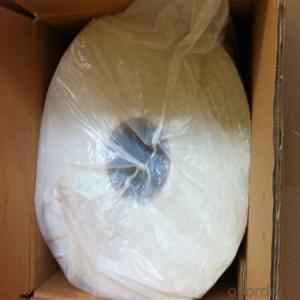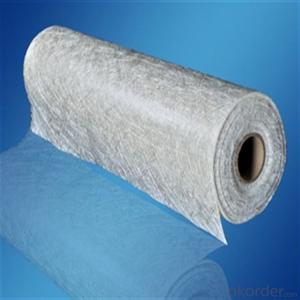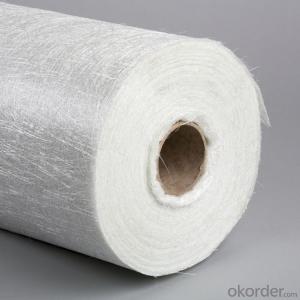E-glass chopped stand mat, woven fiberglass cloth
- Loading Port:
- Tianjin
- Payment Terms:
- TT OR LC
- Min Order Qty:
- 100 m.t.
- Supply Capability:
- 10000 m.t./month
OKorder Service Pledge
OKorder Financial Service
You Might Also Like
Quick Details
| Technique: | Chopped Strand Fiberglass Mat (CSM) | Dimensions: | 80g - 900g | Mat Type: | Continuous Filament Mat |
| Fiberglass Type: | E-Glass | Softness: | soft, very soft | Place of Origin: | Shandong, China (Mainland) |
| Brand Name: | cnbm | Model Number: | CSM | material: | fiberglass |
| Glass type: | E glass / C glass | Bond type: | powder or emulsion | Roll width: | 200 - 2600mm |
| Roll weight: | 28 - 55kgs | Density: | 225g/m2, 300g/m2, 450g/m2 | Certification: | ISO, CE |
Packaging & Delivery
| Packaging Details: | standand export packing . or packed as customer's need |
| Delivery Detail: | 10-20days after the contract is effective |
Specifications
Fiberglass Chopped Strand Mat
1.good combination fo resin
2.easy operation
3.good wet strength retention
Specification:
Fiberglass Chopped Strand Mat is an non-woven E- or C-glass fiberglass fabric manufactured by spreading continuous filament rovings of 50mm in length randomly and uniformly in combination with polyester binder in power form (or other binder in emulsion form). Powder or Emulsion fiberglass fiber chopped glass mat

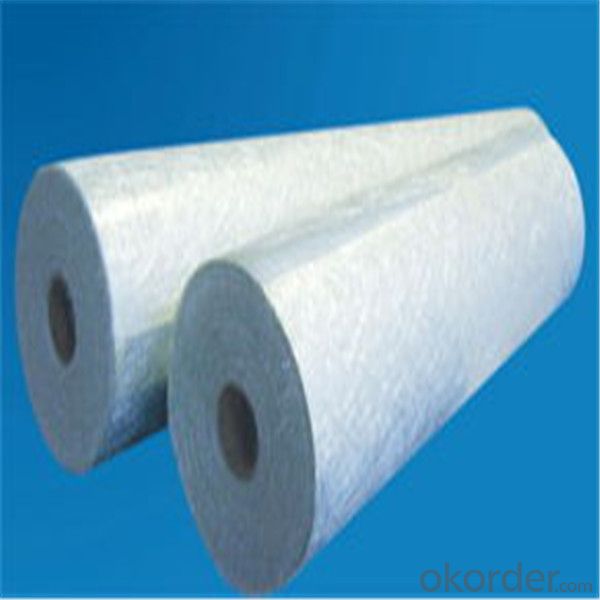
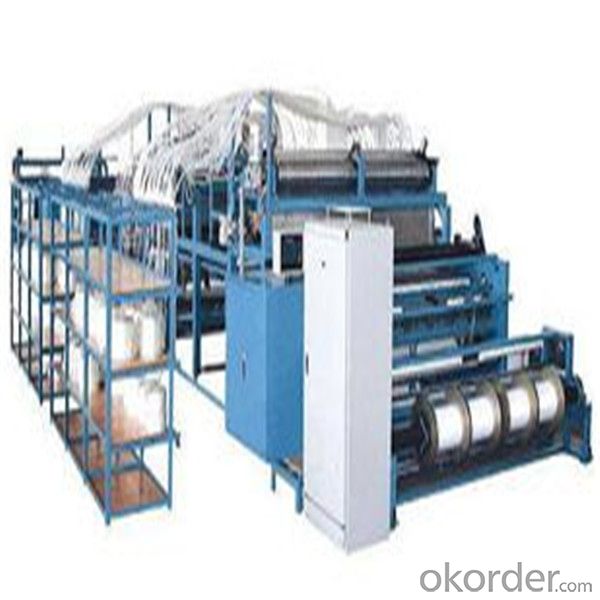
- Q:How does the diameter of the chopped strand affect its performance?
- The diameter of the chopped strand can significantly impact its performance. A smaller diameter strand typically results in better dispersion and wet-out in the resin matrix, leading to improved mechanical properties and overall performance of the composite material. Additionally, a smaller diameter strand allows for higher fiber loading, increasing the strength and stiffness of the final product. Conversely, a larger diameter strand may provide better impact resistance but can result in reduced flowability during processing and potentially create voids or weak spots in the composite structure.
- Q:Does fiberglass chopped strand have any UV resistance?
- Yes, fiberglass chopped strand does have some level of UV resistance. However, it is important to note that the extent of this resistance can vary depending on the specific type and quality of the fiberglass material. While some fiberglass chopped strands are specifically designed to have enhanced UV resistance, others may require the application of a protective coating or finish to mitigate the effects of prolonged exposure to sunlight. UV resistance in fiberglass chopped strand is primarily achieved through the addition of various additives and coatings during the manufacturing process. These additives and coatings act as a barrier, preventing the harmful UV rays from penetrating the fiberglass material and causing degradation. It is worth mentioning that even with UV resistance, fiberglass chopped strand may still experience some level of discoloration, yellowing, or degradation over time when exposed to direct sunlight for extended periods. Therefore, it is generally recommended to minimize direct UV exposure and take appropriate protective measures, such as applying a UV-protective coating, when using fiberglass chopped strand in outdoor applications.
- Q:What are the abrasion resistance properties of fiberglass chopped strand?
- Fiberglass chopped strand exhibits excellent abrasion resistance properties due to its strong and durable nature. The individual glass fibers in the chopped strand are tightly bound together, forming a tough and resilient material that can withstand repeated friction and wear. This makes it highly suitable for applications where resistance to abrasion is required, such as in automotive parts, industrial components, and protective coatings.
- Q:How does the moisture content of fiberglass chopped strand affect its performance?
- The moisture content of fiberglass chopped strand can significantly impact its performance. Excess moisture can lead to reduced mechanical properties, such as decreased tensile strength and impact resistance. It can also cause delamination or blistering of the resin matrix, reducing the overall integrity of the composite material. Additionally, moisture can promote the growth of microorganisms, leading to degradation and potential failure over time. Therefore, it is essential to ensure proper moisture control and storage conditions for fiberglass chopped strand to maintain optimal performance.
- Q:How does the fiber diameter distribution of fiberglass chopped strand affect the properties of composites?
- The fiber diameter distribution of fiberglass chopped strand plays a crucial role in determining the properties of composites. The distribution refers to the range of different fiber diameters present in the chopped strand. Firstly, the fiber diameter distribution determines the overall strength and stiffness of the composite material. Fiberglass fibers with a smaller diameter have a higher surface area-to-volume ratio, allowing for better bonding between the fibers and the matrix material. This results in improved mechanical properties such as tensile strength and modulus of elasticity. On the other hand, larger diameter fibers may provide better impact resistance due to their increased energy absorption capabilities. Secondly, the fiber diameter distribution affects the porosity and void content of the composite. Smaller diameter fibers tend to pack more closely together, reducing the amount of voids and enhancing the overall density and tensile properties of the composite. Conversely, larger diameter fibers can create more voids and reduce the interfacial adhesion between the fiber and matrix, leading to a decrease in strength and stiffness. Additionally, the fiber diameter distribution influences the surface finish and appearance of the composite. Smaller diameter fibers typically result in a smoother surface finish, while larger diameter fibers may create a more textured surface. This aesthetic aspect can be important in applications where the visual appearance of the composite is relevant. Furthermore, the fiber diameter distribution affects the manufacturing process and the ability to disperse and distribute the fibers evenly within the matrix material. Fibers with a narrow diameter distribution are easier to process and disperse uniformly, resulting in improved mechanical properties and consistency across the composite. Conversely, a wide diameter distribution may lead to challenges in achieving a homogeneous distribution of fibers, potentially resulting in variations in properties within the composite. In summary, the fiber diameter distribution of fiberglass chopped strand significantly impacts the properties of composites. It influences the overall strength, stiffness, porosity, surface finish, and manufacturing process. Therefore, understanding and controlling the fiber diameter distribution is essential in the design and production of high-performance composites.
- Q:How does the toughness of the chopped strand affect its performance?
- The toughness of the chopped strand directly affects its performance by determining its ability to resist breakage or failure under stress. A higher toughness ensures better durability, impact resistance, and overall strength of the material or product it is used in.
- Q:Can fiberglass chopped strand be used in the production of insulation blankets?
- Yes, fiberglass chopped strand can be used in the production of insulation blankets. Fiberglass chopped strand is a lightweight and versatile material that offers excellent thermal insulation properties. It can be easily processed and formed into insulation blankets, which are widely used in various industries for thermal and acoustic insulation purposes. The chopped strands help to enhance the overall insulation performance of the blankets by providing a dense and uniform layer of insulation material. Additionally, fiberglass chopped strand is resistant to moisture, chemicals, and fire, making it an ideal choice for insulation applications.
- Q:How does the fiber aspect ratio distribution of fiberglass chopped strand affect the properties of composites?
- The properties of composites are heavily influenced by the distribution of aspect ratios in fiberglass chopped strand. Aspect ratio refers to the ratio of fiber length to diameter. To begin, achieving desirable mechanical properties in composites requires a uniform and well-controlled aspect ratio distribution. Fiberglass chopped strands with a narrow distribution of aspect ratios offer better load transfer and reinforcement to the matrix material. As a result, the resulting composite material exhibits enhanced strength, stiffness, and toughness. Moreover, the aspect ratio distribution impacts the fiber-matrix interface. Fiberglass fibers with higher aspect ratios possess larger surface areas available for bonding with the matrix material. This leads to improved interfacial adhesion, ultimately enhancing the overall mechanical performance of the composite. Additionally, the aspect ratio distribution affects the dispersion and orientation of the fibers within the matrix. Fibers with a narrower distribution of aspect ratios disperse more evenly and align better within the matrix. Consequently, this improves fiber packing, reduces void content, and enhances interlaminar shear strength, thereby improving the overall performance of the composite. Furthermore, the aspect ratio distribution has implications for the processing and manufacturing of composite materials. Fibers with a wider distribution of aspect ratios can pose challenges during mixing, impregnation, and compaction processes, which may result in reduced fiber dispersion and potential defects in the composite. Conversely, a narrower distribution of aspect ratios allows for easier and more efficient processing, leading to improved consolidation and overall quality of the composite. In conclusion, the fiber aspect ratio distribution of fiberglass chopped strand significantly impacts the properties of composites. A narrow and well-controlled distribution improves mechanical properties, enhances interfacial adhesion, promotes better fiber dispersion and orientation, and facilitates efficient processing and manufacturing. Therefore, understanding and optimizing the aspect ratio distribution is crucial for tailoring composite properties to specific applications.
- Q:Does fiberglass chopped strand have any water absorption properties?
- Yes, fiberglass chopped strand does have water absorption properties. Due to its porous nature, it can absorb water over time, leading to potential degradation or weakening of the material.
- Q:How does the adhesion of the chopped strand affect its performance?
- The adhesion of the chopped strand plays a crucial role in determining its performance. The adhesion refers to the bond strength between the individual glass fibers and the matrix material in a composite material. A strong adhesion between the chopped strand and the matrix material is advantageous for several reasons. Firstly, it ensures effective load transfer between the fibers and the matrix, leading to improved mechanical properties such as tensile strength, flexural strength, and impact resistance. The load transfer is essential because the fibers are responsible for carrying the majority of the load in a composite material. A weak adhesion could result in poor load transfer, leading to lower overall performance. Secondly, a strong adhesion helps in preventing fiber pull-out. Fiber pull-out occurs when the fibers are not firmly bonded to the matrix and are pulled out during loading, reducing the efficiency of the composite material. With a good adhesion, the fibers remain embedded in the matrix, providing continuous reinforcement and enhancing the overall strength of the material. Furthermore, a strong adhesion also improves the resistance of the composite material to environmental factors such as moisture and temperature. A weak adhesion can lead to reduced resistance to these factors, resulting in degradation and reduced performance over time. In summary, the adhesion of the chopped strand significantly affects its performance. A strong adhesion ensures effective load transfer, prevents fiber pull-out, and enhances resistance to environmental factors, ultimately leading to improved mechanical properties and durability of the composite material.
1. Manufacturer Overview |
|
|---|---|
| Location | |
| Year Established | |
| Annual Output Value | |
| Main Markets | |
| Company Certifications | |
2. Manufacturer Certificates |
|
|---|---|
| a) Certification Name | |
| Range | |
| Reference | |
| Validity Period | |
3. Manufacturer Capability |
|
|---|---|
| a)Trade Capacity | |
| Nearest Port | |
| Export Percentage | |
| No.of Employees in Trade Department | |
| Language Spoken: | |
| b)Factory Information | |
| Factory Size: | |
| No. of Production Lines | |
| Contract Manufacturing | |
| Product Price Range | |
Send your message to us
E-glass chopped stand mat, woven fiberglass cloth
- Loading Port:
- Tianjin
- Payment Terms:
- TT OR LC
- Min Order Qty:
- 100 m.t.
- Supply Capability:
- 10000 m.t./month
OKorder Service Pledge
OKorder Financial Service
Similar products
New products
Hot products
Related keywords
